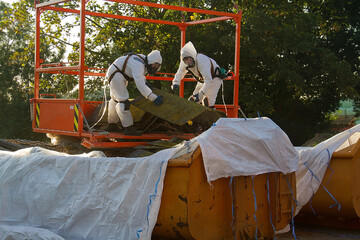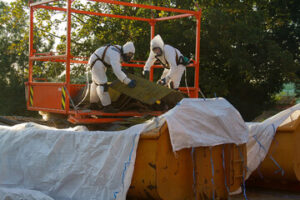Teeth Cleaning Las Vegas helps reduce your risk for cavities, gum disease, and other oral health issues. Combined with good at-home oral hygiene, dental cleanings every six months can help you have a healthier smile for life.
Routine dental cleanings remove plaque and tartar from teeth, which helps prevent tooth decay. A fluoride treatment is usually added to help prevent cavities between cleaning appointments.

The sticky film of bacteria called plaque always forms on your teeth, and it can become infected if left untreated. If the infection spreads to your gum tissue, it can create spaces around your teeth that are difficult to reach with a regular toothbrush, and these pockets can lead to bone and tooth loss. A scaling teeth cleaning procedure can help you prevent these issues by removing the tartar deposits that are most likely to cause gum disease.
During the scaling teeth cleaning process, your dentist or dental hygienist will use a metal tool to scrape the surface of your teeth to remove the accumulated plaque and tartar. The numbing process should make this a relatively painless procedure, although you may experience some discomfort for a few days after the cleaning. Your dentist will recommend a toothpaste or mouthwash to use after your appointment, and they might schedule a follow-up visit to check on your healing progress.
A scaling and root planing (SRP) procedure is often recommended to patients who have gum disease, as it can help restore your oral health and prevent further complications. During this treatment, your dentist or hygienist will clean above and below the gum line to remove the bacteria-filled plaque that is causing the infection and promote gum tissue regeneration.
You may experience some bleeding or sore gums after a scaling teeth cleaning, but this should fade within a few days. If you have sensitive teeth, your dentist might suggest using a desensitizing toothpaste after the treatment or prescribe an ointment to soothe your gums.
A scaling and root planing treatment can be very effective at restoring your oral health, but it is important to practice consistent brushing and flossing routines in between appointments. Your dentist or hygienist can recommend an appropriate cleaning schedule for you based on your unique needs, and this will help ensure that your oral hygiene habits are effective in keeping your gums healthy. In combination with regular visits to your dentist, this will also reduce the risk of more serious dental problems down the road.
Unlike regular dental cleanings, root planing and scaling are procedures that remove plaque from beneath the gum line. This is necessary for patients with periodontal disease who have developed pockets between their teeth and gums. These pockets are difficult for brushing to reach, and can lead to severe gum disease if left untreated. During the procedure, the dentist will scrape away any plaque and tartar in these pockets, then smooth out the surface of your tooth roots to make it easier for gums to reattach to teeth. A local anesthetic may be used to reduce the pain caused by this process.
After root planing and scaling, your teeth will likely feel more sensitive than usual. This is due to the fact that your gums will be sore and irritated for a while, as well as the fact that the clean roots will be more exposed. You can help alleviate this discomfort by using a sensitive toothpaste, like Risewell. It is recommended that you avoid eating foods or drinking beverages that are too hot or cold for the first few days after your deep cleaning.
If you do experience pain after your cleaning, it is important that you see a dentist immediately to prevent infection. A dentist can prescribe an antibiotic or mouthwash to help fight infection and soothe your gums. You should also continue to practice good oral hygiene habits after your treatment, including brushing twice daily, flossing, and using an interdental toothbrush to reach between your teeth. In addition, you should avoid smoking because it can slow healing and increase your risk of complications.
Neglecting your oral health can result in a number of serious problems, including gum disease, cavities, and bad breath. While brushing and regular dental visits can help prevent these issues, sometimes plaque and tartar buildup will occur despite your best efforts. Fortunately, teeth scaling and root planing are effective treatments for gum disease that can help keep your smile healthy.
Fluoride is a mineral that is naturally occurring in water, milk and some foods. Its role in dentistry is to strengthen tooth enamel and prevent cavities. It is applied topically as gels, foams or varnishes in the dental office and also delivered systemically through toothpaste/dentifrices or mouth rinses.
Professional fluoride treatments help prevent cavities and are often given to children whose teeth are still growing or in the teen years because their teeth are more susceptible to dental caries (cavities). But adults can benefit from this treatment too! Especially those who have a history of cavities or those who are on medications that dry out the mouth, which increases the risk for tooth decay.
The procedure is quick and painless. First, the dentist or hygienist will examine the mouth to ensure it is free of debris and is ready for fluoride treatment. Then, the hygienist will use a rubber cup to remove any soft plaque and then polish the teeth with a small brush using prophy paste. This removes any superficial stains and makes the teeth look bright and clean.
After that, the hygienist will apply the fluoride. They may choose to use a gel, foam or varnish depending on their preference. This usually takes no more than a few minutes and then the patient is free to go!
It is important to remember that fluoride treatments only work in conjunction with other good oral hygiene habits like brushing twice a day, flossing regularly and eating a balanced diet. It is recommended that patients visit the dentist on a regular basis and schedule their cleanings twice a year.
After a professional fluoride treatment, it is recommended that the patient waits for about six hours before eating or drinking anything. This allows the fluoride to properly absorb into the tooth enamel. Also, it is best to avoid drinks that could stain the teeth, such as coffee, tea, red wine, etc.
Like an annual physical, a routine teeth cleaning is essential to the health of a smile. It removes plaque and tartar build-up in and around the gum line to reduce a patient’s risk of tooth decay and gum disease. It also gives the dentist and dental hygienist the chance to spot signs of trouble, such as tooth decay and oral cancer.
The dental hygienist starts by conducting an oral examination of the teeth and gums, which is a very quick and painless process. If the hygienist finds anything that warrants further assessment, they will request that a dentist check it out. For the remainder of the appointment, the hygienist will scrape away the excess plaque and tartar around the gum line and in between your teeth. The sound of this scraping can be a little unsettling, but it’s perfectly normal and extremely beneficial for your dental health. It reduces your risk of tooth decay and gum disease, which can lead to a host of other issues, such as bone loss in the jaw.
In addition to removing the plaque and tartar, a professional teeth cleaning will also help to remove surface stains from the teeth. If you are due for a cleaning, it is recommended that you avoid consuming heavily staining substances like coffee, tea, red wine, and dark-colored fruits in the days leading up to your appointment. This will allow your teeth to absorb less of the chemicals, which can cause discoloration.
Once the cleaning is completed, the dentist will assess their findings and discuss any additional treatments or schedules. They may recommend that you brush and floss more frequently or use a specific mouthwash to improve your oral hygiene routine. They can also give you tips on dietary choices and other lifestyle practices that can further improve your oral health and help to prevent future problems.
It is generally recommended that patients visit their dentists for a routine teeth cleaning and exam every six months. This is the ideal frequency for most people. However, if your dentist has assessed that you are at a greater risk for developing cavities or gum disease, they will recommend more frequent visits, typically every three to four months.



 Asbestos is a group of naturally occurring fibrous minerals that are very strong, fire-resistant, and flexible. It has been used in over 3,000 commercial and industrial products for its heat resistance, strength, and insulating properties. Many older homes and commercial buildings contain asbestos in building materials such as asbestos cement shingles, insulation, and pipe wraps. It has also been used in paper products and felts such as fireproofing textiles; paints, coatings, and adhesives; and friction materials such as automotive clutch pads, brake linings, and shoes. It has also been found in vermiculite-containing garden products and some talc-based crayons.
Asbestos is a group of naturally occurring fibrous minerals that are very strong, fire-resistant, and flexible. It has been used in over 3,000 commercial and industrial products for its heat resistance, strength, and insulating properties. Many older homes and commercial buildings contain asbestos in building materials such as asbestos cement shingles, insulation, and pipe wraps. It has also been used in paper products and felts such as fireproofing textiles; paints, coatings, and adhesives; and friction materials such as automotive clutch pads, brake linings, and shoes. It has also been found in vermiculite-containing garden products and some talc-based crayons.